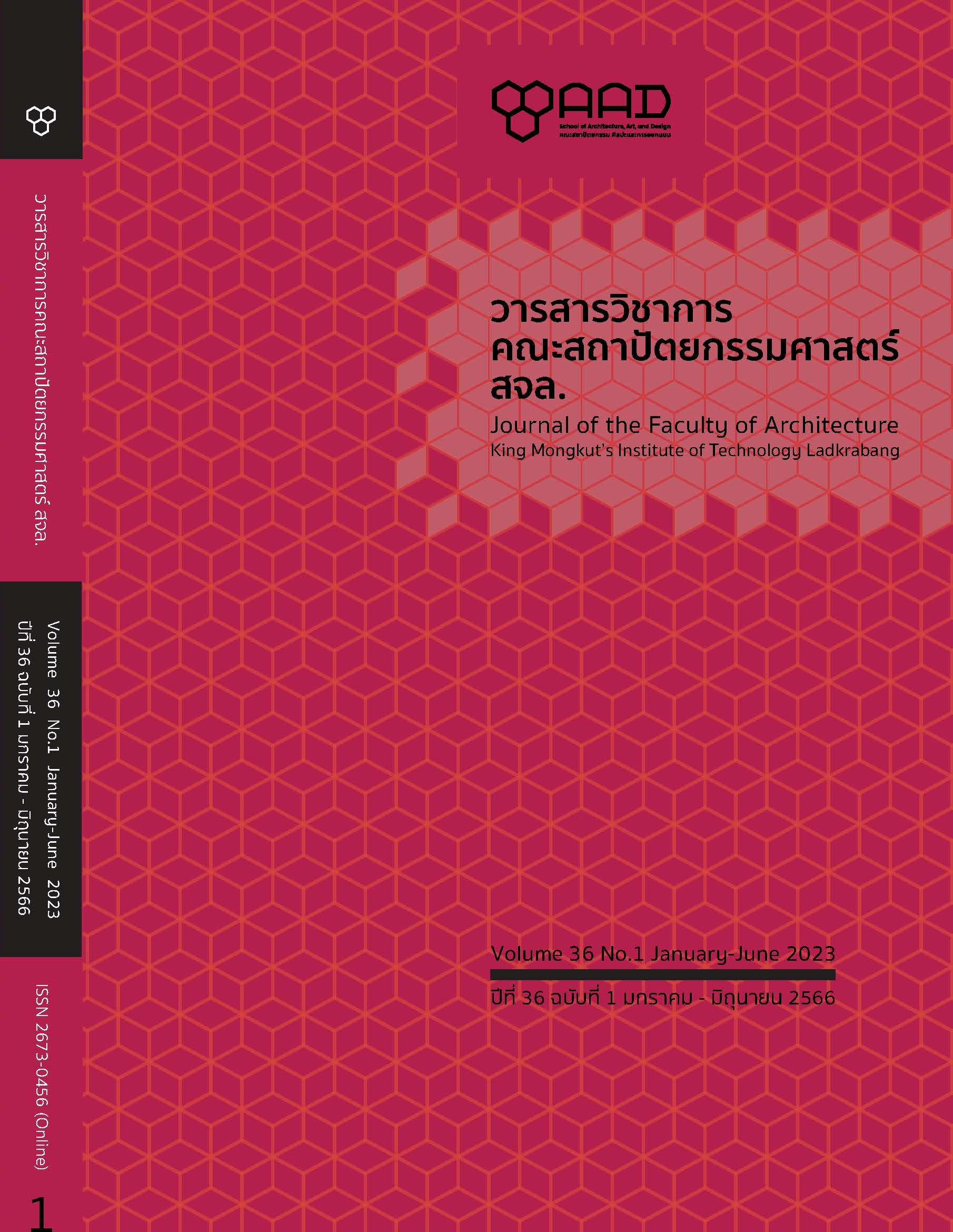An Analysis of Pedestrian Systems and their Physical Elements in Yan Ta Khao District, Trang Province
Main Article Content
Abstract
The study reported in this article aims to examine and analyze pedestrian systems and physical environments of pedestrian paths in Yan Ta Khao, a district in Trang Province; and to provide a guiding baseline for improvement of pedestrian pathways of the city. Yan Ta Khao was chosen for the current study because it used to be a lively city, but currently Ya Ta Kho is lifeless and lacks the development of fundamental infrastructure including both the road system and efficient pathways. The study of Yan Ta Khao was conducted following the concept of developing the city into a walkable city. Data of the study was collected from the survey of 33 pedestrian paths in Yan Ta Khao Municipal, and a questionnaire about walking behavior and satisfaction of a sample of 380 pedestrians. All the data collected were analyzed using 4 aspects of Pedestrian System Design Criteria including connectivity, safety, facilities, and attractiveness. Results of the analysis indicate that pedestrian systems of Yan Ta Khao need improvements in all four aspects. Walking networks need to be improved in order to enhance the connectivity in commercial and residential zones as well as in important landmarks of the town. Physical pedestrian environments also need to be upgraded to maximize the pathways’ convenience, safety, and attractiveness. The physical upgrade of pedestrian systems includes, for example, zoning of vendors and billboards along the roads; more street lighting installations; larger paths; more pedestrian crossings, vehicle speed controls; and architectural controls. Improvements in such aspects will promote convenience and attract more people to use pathways on a daily basis.
Article Details

This work is licensed under a Creative Commons Attribution-NonCommercial-NoDerivatives 4.0 International License.
This work is licensed under a Creative Commons Attribution-NonCommercial-ShareAlike 4.0 International License.
Copyright Transfer Statement
The copyright of this article is transferred to Journal of The Faculty of Architecture King Mongkut's Institute of Technology Ladkrabang with effect if and when the article is accepted for publication. The copyright transfer covers the exclusive right to reproduce and distribute the article, including reprints, translations, photographic reproductions, electronic form (offline, online) or any other reproductions of similar nature.
The author warrants that this contribution is original and that he/she has full power to make this grant. The author signs for and accepts responsibility for releasing this material on behalf of any and all co-authors.
References
Arayanimitskul, C. (2015). Plants in landscape architecture. Bangkok: Chulalongkorn University Press.
Boonon, N., and Limpaseni, W. (2020). Sidewalk development for convenient Bangkok metropolitan: a case study of sidewalk along BTS light green line (Silom line). Vajira Medical Journal: Journal of Urban Medicine, 64(3), 213-222.
Department of Provincial Administration. (2018). Demographic, Population and Housing Statistic. Bangkok: Department of Provincial Administration.
Department of Public Works and Town & Country Planning. (2017). City plan of Trang (2nd update). Trang: Department of Public Works and Town & Country Planning.
Dines, T. N. and Harris, W. C. (2001). Time Saver Standards for Landscape Architecture. New York: McGraw-Hill.
Gehl J. (2013). Cities for People. London: Island Press.
Halifax Regional Municipality. (2006). The 2006 Halifax Regional Plan. Halifax: Halifax Regional Municipality.
Horayangkura, V., Settaworakit, B. and Klinmalai, S. (2011). Environmental psychology a basis for creation and management of livable environment. Bangkok: G.B.P center co., ltd.
Hynds, H., and Allibone, C. (2009). What motivates people to participate in organised walking activity. Sheffield: Natural England.
Jacobs, J. (1961). The Death and Life of Great American Cities. New York: Random House.
Marquet, O., and Miralles-Guasch, C. (2015). The Walkable city and the importance of the proximity environments for Barcelona’s everyday mobility. The International Journal of Urban Policy and Planning, 42, 258-266.
National Center for Bicycling and Walking. (2002). Increasing physical activity through community - design: a guide for public health practitioners. Washington, D.C.: National Center for Bicycling and Walking.
National Heart Foundation of Australia. (2019). Blueprint for an active Australia. Melbourne: National Heart Foundation of Australia.
Nguanson, C. (2017). Development and guidelines for sustainable development of Yan Ta Khao, Trang province. Journal of Environmental Design, 4(2), 51-66.
Office of Transport and Traffic Policy and Planning. (2012). Assessment of ease of walking in Chiang Mai urban areas. Bangkok: Office of Transport and Traffic Policy and Planning.
Sakulrattanakulchai, S. and Khongouan, W. (2016). Safety of pedestrian and bike trail accessing to parks in Bangkok and vicinities. Journal of The Faculty of Architecture King Mongkut's Institute of Technology Ladkrabang, 22(1), 70-87.
Southworth, M. (2005). Designing the walkable city. Journal of urban planning and development, 131 (4), 246-257.
Speck, J. (2018). Walkable city rules: 101 steps to making better places. Washington, D.C.: Island Press.
Steiner, F. R., Butler, K., and American Planning Association. (2012). Planning and urban design standards. New Jersey: John Wiley & Sons.
Tapananont, N. (2010). Bangkok urban planning standards project. Bangkok: n.p.
Thommen Dombois, O., Kahlmeier, S., Martin-Diener, E., Martin, B., Racioppi, F., and Braun-Fahrländer, C. (2006). Collaboration between the health and transport sectors in promoting physical activity: examples from European countries. Copenhagen: World Health Organization Regional Office for Europe.
Turon, K., Czech, P., and Juzek, M. (2017). The concept of a walkable city as an alternative form of urban mobility. Scientific Journal of Silesian University of Technology. Series Transport, 95, 223-230.
Yamane, T. (1973). Statistics: An Introductory Analysis-3. New York: Harper & Row.


